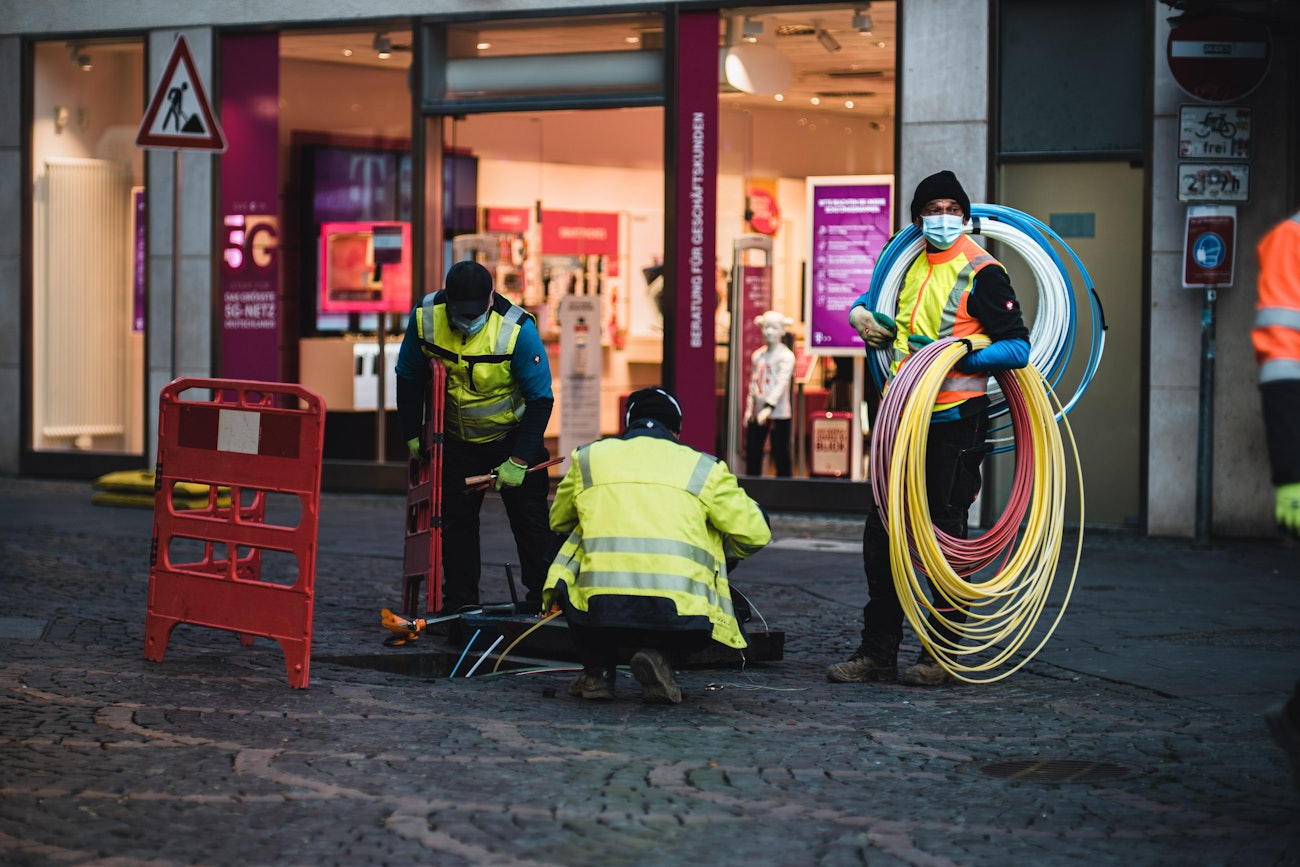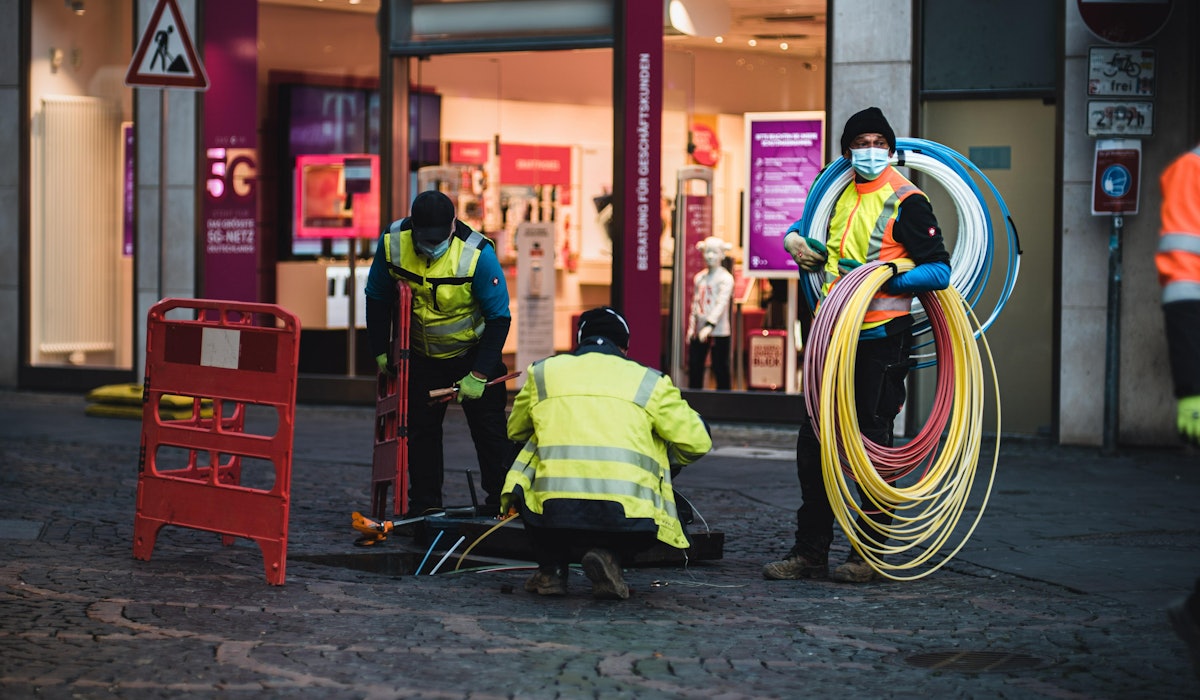The new telecoms opportunity
As the UK forges ahead with Gigabit roll-out to underserved and rural areas of the UK and reduce the digital divide between the underserved rural areas of the country and metro regions, the rise of the alternative network providers (AltNets) has provided the telecoms industry with a timely boost. The UK Government’s plan to provide over 15million homes with gigabit capable broadband by the end of 2025 has provided a once-in-a-lifetime opportunity for entrepreneurial telecoms start-ups to build networks that run in parallel and compliment traditional service provider networks.
So how can Nomios help telecoms start-ups and already established service providers take advantage and succeed in this exciting market segment?
Example ALT Net reference architecture
Nomios has been involved in the design, development, deployment and management of AltNet networks and understands both the opportunity, and the challenge.
To help AltNet companies that are entering the market we have developed an example reference architecture which aims to describe the elements required to build a full ISP network.
Smaller operators may start with only some of these elements, but with maturity and growth, require additional elements and some may be entirely optional, dependent on circumstances and the strategic intent of the business.
Of course, no two AltNets will look the same in terms of geography, client portfolio or business strategy, but a fair percentage will need to consider most of the elements in this reference architecture as they develop and mature their business model.
This example deployment architecture has been segregated broadly in line with the “OSI 7 LayerModel” with a particular focus on:
- Layer 3: Network Layer = IP / MPLS. (Routers, firewalls etc)
- Layer 2: Transport Layer = Ethernet / xDSL. (Ethernet switches and xDSL-style broadband)
- Layer 1: Physical Layer. This is the raw stream of “bits & bytes”. (Fibre and some Optical)
This example also divides the ISP network into three broad areas of coverage:
- Core & Edge: This is the core network, primarily responsible for interconnecting regions (metro, towns, cities), and providing access to the internet via transit & peering points.
- Access: Whilst this area may differ in make-up between AltNets, this is broadly the means of connecting individual residential or business subscribers onto the core of the ISP network, and the required supporting services. This may be based on technology such as xPON, 5G, P2P Ethernet...
- Datacentre: It likely that the ISPs will need to offer some services to their customers (such as account/billing portals, and other ISP services such as DNS). Whilst some of these may reside in Cloud, an on-premise secure and scalable datacentre architecture maybe required.
The goal of a typical AltNet is to provide fast, reliable, resilient Internet connectivity, with efficient use of CAPEX and OPEX. Simplicity of design is essential to allow for fast resolution of any service issues. The ability to easily scale-out architecture using open standards with a standardised configuration and operating model is important to simplify and sustain growth. The use of automation can also provide competitive advantage to AltNets who are looking to accelerate customer acquisition without tying up valuable human resource.

Solutions for every stage of AltNet evolution
Despite their success, warnings have come from within the industry that for a number of start-up AltNets, securing Government funding and private investors is likely to be the easy bit, getting fibre in the ground, lighting up the network and signing up customers will for many, be more challenging.
Lack of skills, planning, industry knowledge, physical resource and shortages of hardware are good examples of common pitfalls. Nomios works with AltNets of all sizes and at every stage of their maturity to overcome challenges and deliver on their customer, or investor promise. At a high level we simplify the ALT Net market in three tiers, each with its own set of challenges and requirements.
Tier 1
Established ISP level organisations that have taken advantage of the Government led initiative. Typically they will have extensive fibre networks with an established and growing subscriber base (500K+). A common challenge here is post-scale, and the opportunity to outsource services to re-investment and better utilise skilled human resource. Brand value is high as a priority together with user experience customer value. In our experience SIEM, EDR, XDR, Automation and Managed Security Services are very much in the minds of these organisations.
Tier 2
AltNets that have already deployed fibre in the ground and are experiencing accelerated growth. How to scale can be a challenge for Network Security and Infrastructure teams and how to align to fast paced strategic expansion plans. A common challenge is whether to 'acquire hardware aligned to forecasted growth', or 'acquire according to actual growth'. Our innovative and flexible commercial arrangements together with specialist consultancy and project management services have supported the growth plans and market success of AltNets in this tier.
Tier 3
Arguably the most active end of the ALT Net market. These are well-funded ambitious start-up organisations with a mix of requirements from basic process and technical support to full network design, deployment and support services. For many of the AltNets in this tier, time, skills and resource privileges are thin on the ground and being supported by and experienced cyber security and network infrastructure specialist is essential to their early life success. Start-up AltNets also have the incredible opportunity to work with our automation experts to build in automation processes from the start.
Some of our AltNet customers












Eurofiber is paving the way for dynamic smart cities across Europe
It started back in 2000 when Eurofiber laid their first 500km stretch of fibre network to connect the four major Dutch cities of Amsterdam, Rotterdam, The Hague, and Utrecht. Today, they have laid more than 39,000km of fibre - laying 40kms each week - have 11 data centres and a digital footprint that covers the Netherlands, Belgium, France and a new branch in Germany.
For any company that lays this amount of fibre optic cable a trusted system integrator is vital if they are going to achieve their goal of helping European cities stay connected. Step in Nomios, who has been a proactive partner for 10 years helping Eurofiber move from the early days of dark fiber to providing a secure and connected digital infrastructure.


Leading partners for AltNets
Additional services for AltNets
Our strength lies in our flexibility and focus on developing tailor-made solutions for our customers. Discover in which areas we can support your team.
Technology consulting
With our strategy, industry and engineering expertise - weave technology throughout your business to create something unique, drive growth and accelerate outcomes.
Security assessments
Our security assessments deliver actionable recommendations to improve security.
Core networking
High-performance core network solutions.
Optical networking
Mission-critical transmission capabilities.
Data centre & cloud networking
Simplify operations and assure experiences with the modern, automated data centre.
Design & integration
Your digital infrastructure represents the foundation of your core business functions. We streamline the entire integration process – from design to delivery.
Mobile backhaul
Open, programmable, cloud-ready.
Broadband termination
Next-generation B-RAS and BNG solutions.
Do you have a project you would like to discuss?
Give us a call or leave a message. We are looking forward to learn about your security project, infrastructure challenges or any other inquiries.

More about AltNet

AltNets
Helping UK AltNets to help themselves
AltNets can reduce risk by forging solid partnerships with experienced network infrastructure providers from the off.

Martin Courtney

AltNets
AltNets must move fast for FTTP gains
Help from commercial and infrastructure partners to scale their fibre networks quickly in line with industry standards is critical to long term success.

Martin Courtney

AltNets
AltNets push onwards and upwards
Managed network and security services key to boosting brand, customer trust and profit margins. The third article in our series examining the fortunes and ambitions of alternative network providers (alt nets) in the UK focusses on Tier 1 suppliers.

Martin Courtney





















